Native Birds of Afghanistan
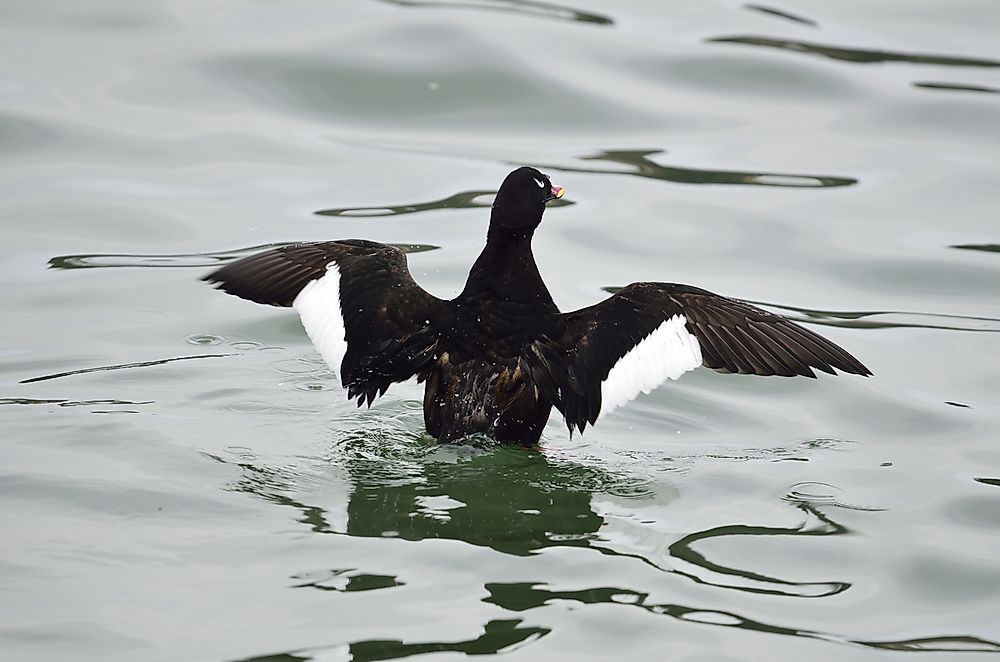
Afghanistan is a country in Central Asia that is home to a wealth of animal species. Below is a list of some of the most interesting types of birds that the country has to offer.
11. Afghan snowfinch
The Afghan snowfinch is a sparrow that has a long, pointed beak. It grows up to 13.5-15 cm in length and may weigh between 18 and 35 grams. Males are often greyish-brown with dark streaks on their mantles. They also have a bit of white on their wings. On the contrary, the females are buff-tinged brown, with greyer face and less white patches on their wings. The Afghan snowfinch live on the slopes of mountains, farmlands during the winter, open stony grounds, and flat steppes. The Afghan snowfinch feeds on seeds and insects.
10. Golden eagle
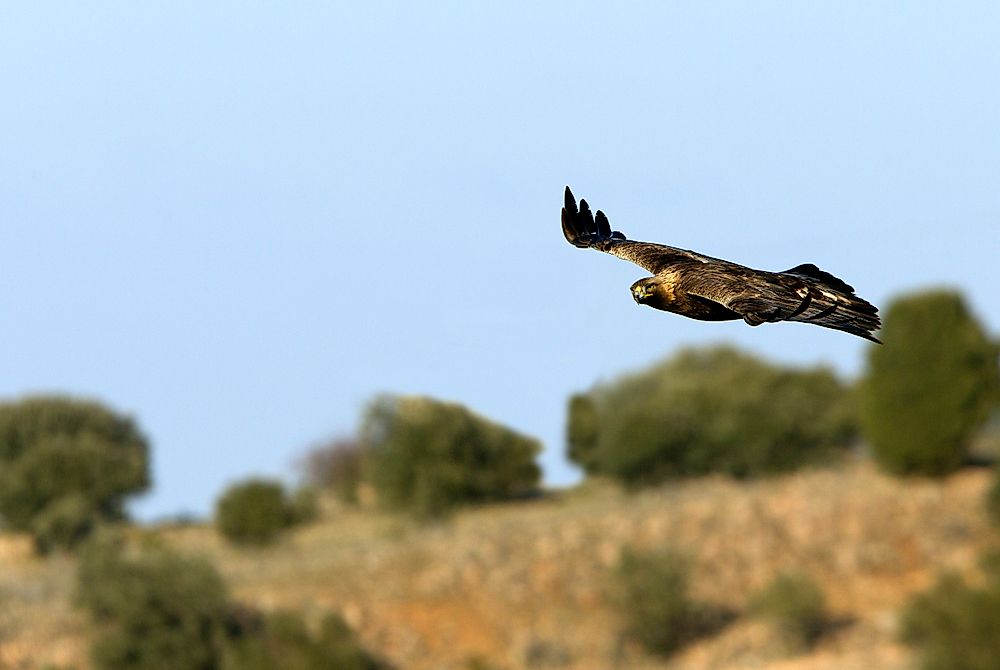
The golden eagle is Afghanistan’s national bird. They are among the best birds of prey found in the Northern Hemisphere. They inhabit cliffs and other high places. This eagle grows to between 66 and 102 cm in length. By appearance, both male and female golden eagles are dark brown with a lighter brown on their wings. The males are larger than the males. The golden eagles prey on rabbits, ground squirrels, marmots, and hares. In doing so, they capitalize on their agility and speed. They also use their massive feet as well as sharp talons to snatch their prey. A major threat to the golden eagles is poisoning.
9. Ashy drongo
Ashy drongo is a bird that is popular for its agility and high flying speed. In appearance, the ashy drongo is dark grey. Its tail is long as well as deeply forked. The bird grows to a size of 23-30 cm and a weight of 32-55 g. It mostly lives in the forest; especially in mountainous regions. The ashy drongo feeds on insects, nectar, and small invertebrates. It is vulnerable to loss of natural habitat, although under the IUCN Red List it is categorized as of Less Concern.
8. White-throated munia
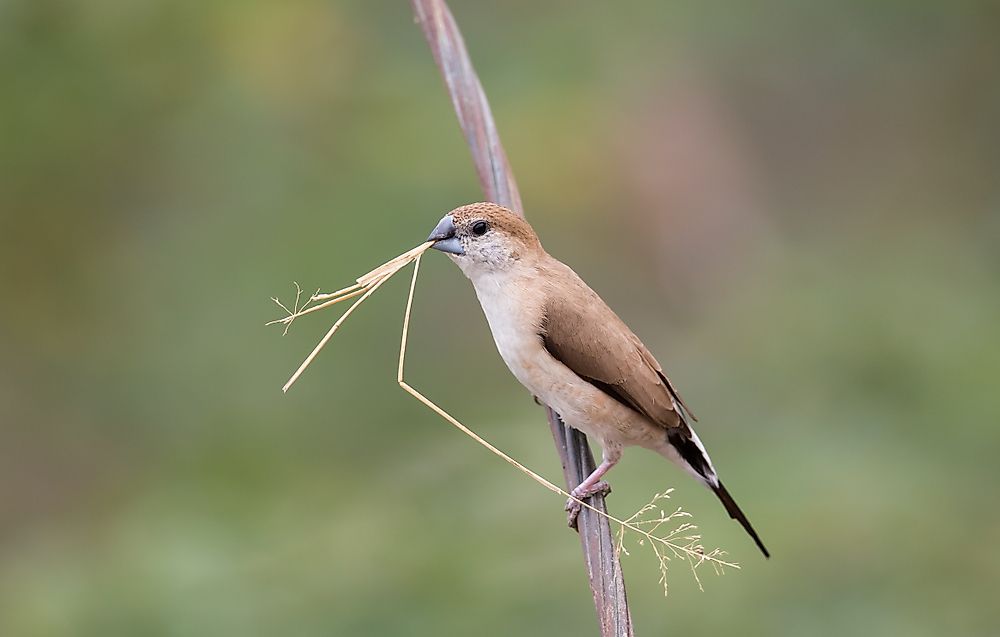
The white-throated munia is a highly sociable bird named after its white throat. Both male and females resemble each other. They both have brown plumage on their bodies. However, the males have slightly wider heads than the females. The white-throated munia grow up to 11-12 cm in length. They inhabit dry areas such as woodlands, dry scrublands, and dry grasslands. These birds feed on a wide range of prey including some birds, rodents, amphibians, reptiles, and crabs.
7. Purple sunbird
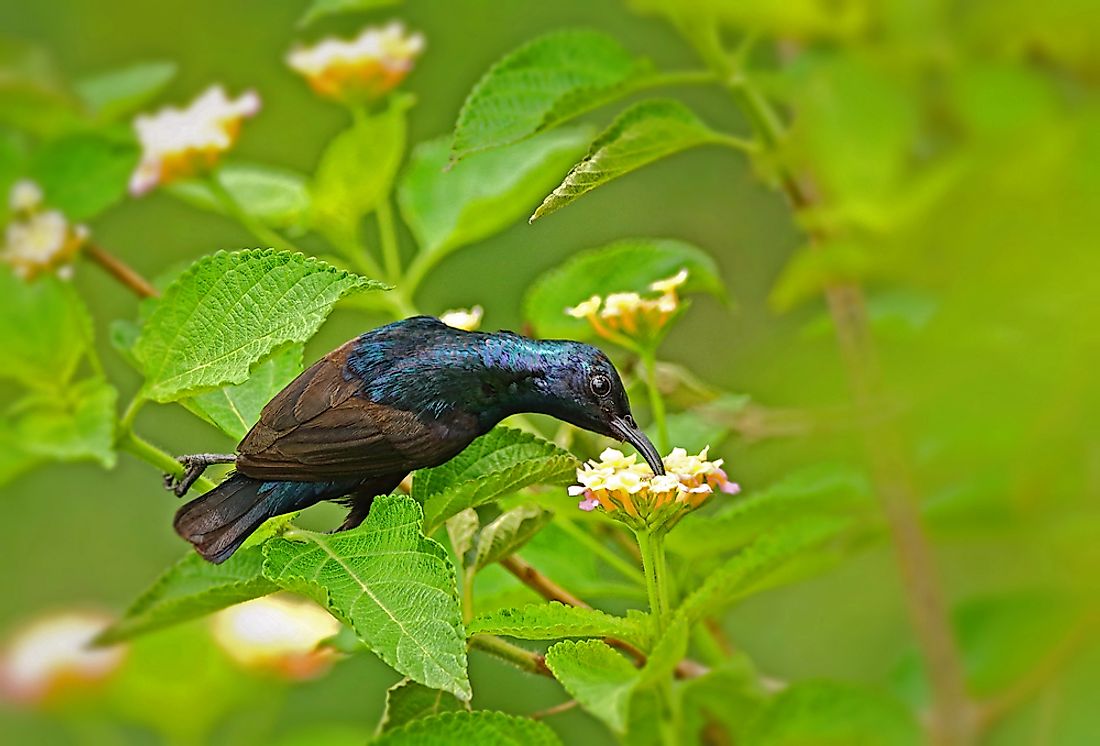
The male purple sunbirds are black. On the contrary, the females are olive brown on the upper parts of their bodies and yellowish below. The purple sunbirds have short bills, short square-ended tails as well as distinct sexual dimorphism. They develop up to less than 10 cm in length. The purple sunbird mainly feeds on nectar. However, sometimes it also consumes insects and fruits. The birds inhabit plains, thin forests, and garden lands. Under the IUCN Red List, the purple sunbirds are listed as of Least Concern.
6. Bar-tailed treecreeper
The bar-tailed treecreepers have striped feathers which may be of either black, white, red, or brown hues. These colors are important for camouflaging its forest habitation. The bar-tailed treecreepers grow up to 14 cm long. They weigh between 7.8 and 10.3 g. The bar-tailed treecreeper has the longest bill in its genus called Certhia. Its diet consists of insects, seeds, tree trunks, and small invertebrates such as spiders. The habitat of these treecreepers is boreal forests and temperate forests.
5. Black-crowned night heron
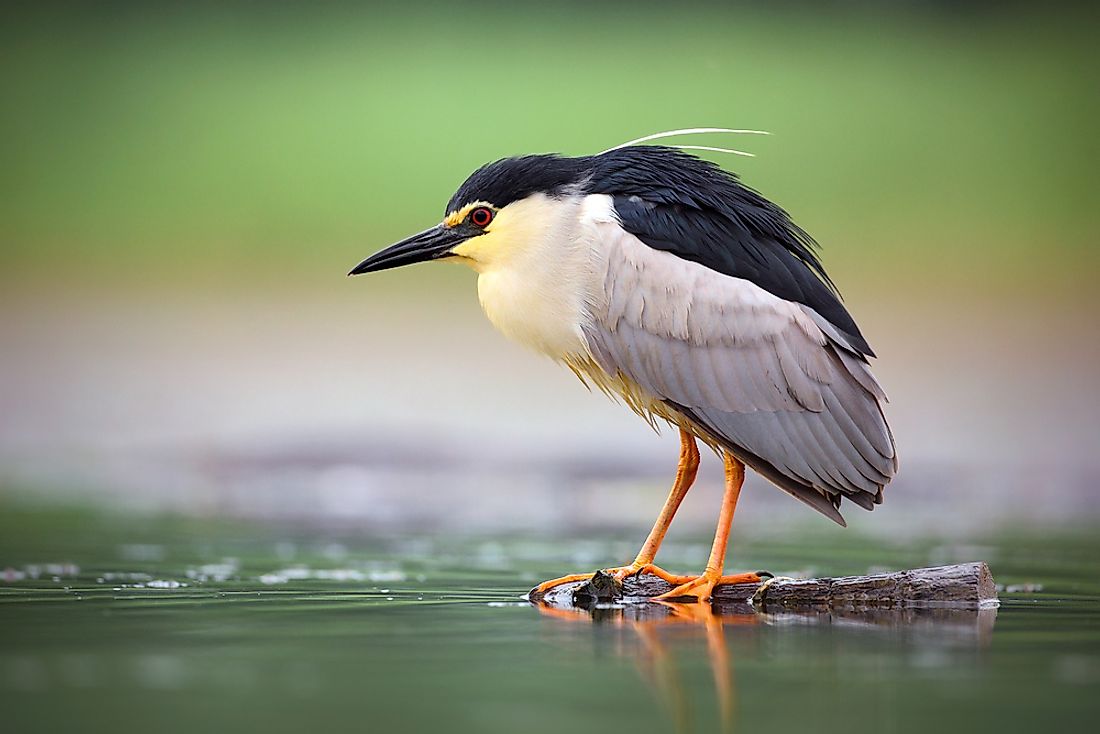
The black-crowned night heron is simply known as the night heron. Its crown and back are black. However, the rest of the body is white or grey. The night heron has short yellow legs and red eyes. The bird grows up to 64 cm in length and weighs 800 g. Its habitat is wetlands such as estuaries, lakes, streams, reservoirs, and marshes. The black-crowned night heron’s diet is small fish, aquatic insects, small birds, crustaceans, small mammals, and frogs
4. Greater flamingo
The greater flamingo is the most popular and largest species of the flamingo family. It is a pinkish bird with white plumage. The feathers are black and its bill is pink with a black tip. The greater flamingo also has red wing coverts. The height of the bird is from 1.1-1.5 m while the mass is 2-4 kg. The flamingo feeds on planktons, fly larvae, and tiny fish. Its existence is threatened by habitat loss and water pollution.
3. Velvet scoter

The velvet scoter is a large sea duck. It is also known as the velvet duck. The bird weighs 1.1-2kg and grows to a length of 52-59 cm. In appearance, the males are black with white eyes and speculum. The females are brown with patches of white on their wings. The velvet scoter’s diet is shellfish, fish, insect larvae, sea urchins, and crabs. Its habitat is woodland, tundra, and small freshwaters. The velvet scoter is listed as Vulnerable under the IUCN Red List. It is threatened by habitat degradation, disturbance from tourism, and marine pollution by oil spills and other pollutants.
2. Demoiselle crane
The demoiselle cranes are migratory birds. Queen Marie Antoinette named them “demoiselle” due to their delicate and maiden-like appearance. The cranes have a height of 89 cm, and a weight of 2-3 kg. They have a pale bluish grey body plumage, short bill, black legs, reddish orange eyes, and black and white feathers. The habitat of the demoiselle crane is open shrubby plains, grasslands, savannahs, and wetlands. The cranes feed on insects, peanuts, beans, small mammals, and plant materials. One threat that they face is desertification which often leads to habitat loss. Other threats include human disturbance and illegal hunting.
1. Pheasant-tailed jacana
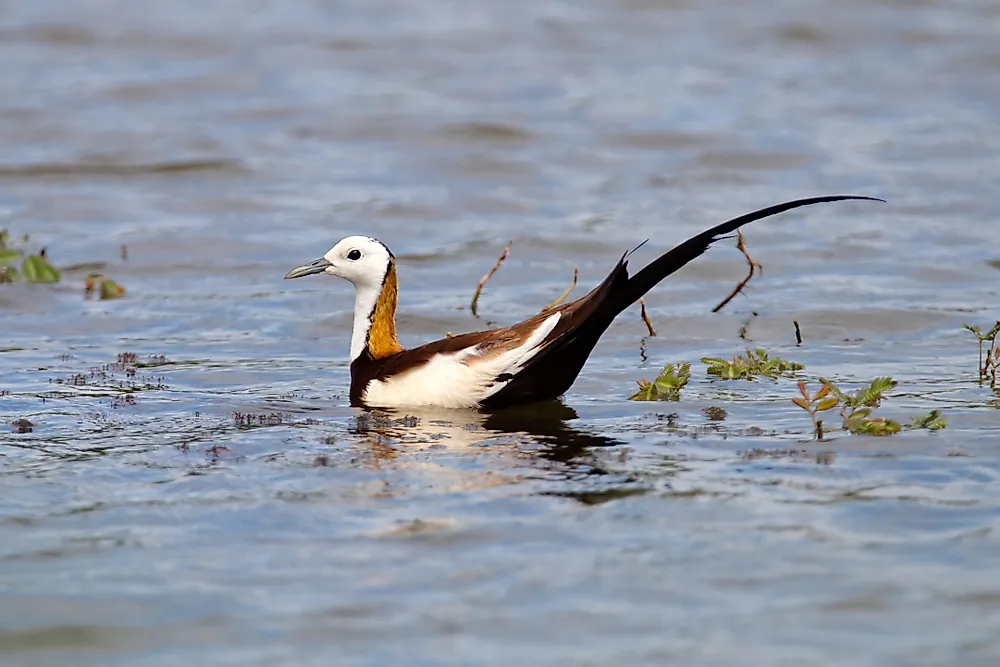
The pheasant-tailed jacana is part of a group of birds called jacanas. The jacanas are waders belonging to the family Jacanidae. They have wide feet and claws that enable them to enjoy swimming. The pheasant-tailed jacanas are approximately 39-58 cm in length and weigh between 113 and 260 g. Among the pheasant-tailed jacana, females are more colorful and larger than males. The bird’s habitat is shallow lakes. They mainly feed on insects.











